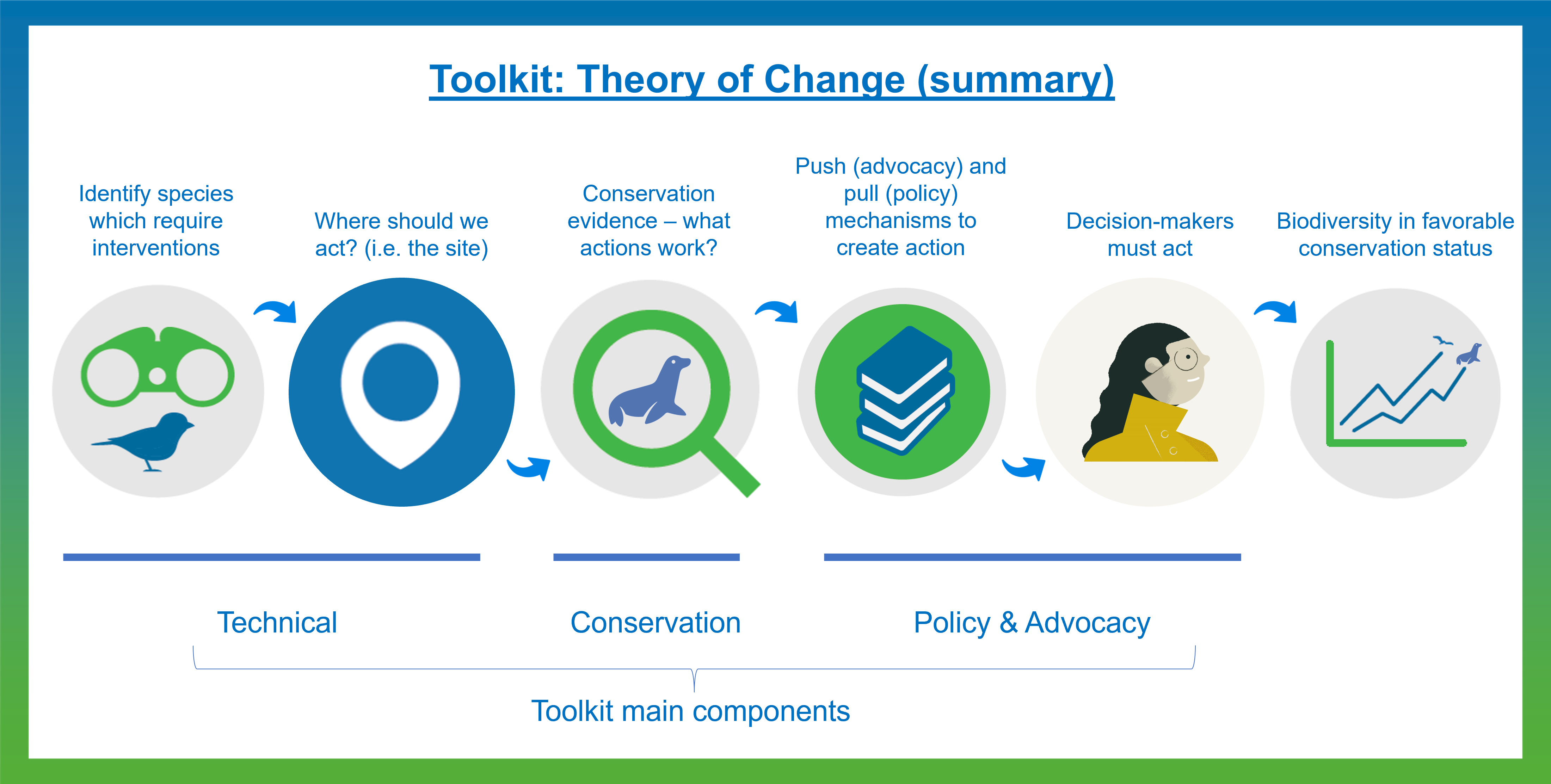5 Getting a site conserved
This toolkit ultimately aims to support users achieve species being in a favourable conservation status.
The toolkit is biased to site-based conservation measures which support species achieving a favrouable conservation status through the conservation and management of globally important sites for biodiversity: Key Biodiversity Areas (KBAs). However, many of the processes and tools outlined in the toolkit will be relevant to the conservation and management of sites which do not meet the criteria to be a considered a Key Biodiversity Area but, nevertheless, may warrant conservation and management measures at differing scales.
We primarily consider a “favourable conservation status” in the context of the International Union for Conservation of Nature’s (IUCN) Red List of Threatened Species, the world’s most comprehensive information source on the global extinction risk status of animal, fungus and plant species.
We recognise that other indices of what may be considered a “favourable conservation status” also exist. For example, national level indices may exist that categorise species in a different way compared to the global IUCN Red List of Threatened Species. Although the resources in the toolkit are biased to particular global outputs (i.e. Key Biodiveristy Areas, KBAs), the toolkit can also help users achieve species reaching a favourable conservation status at scales varying from site specific, to national, regional and global levels.
5.1 Theory of Change
To showcase how users can achieve species being in a favourable conservation status, we use a planning tool called a Theory of Change.
A Theory of Change is simply a visual way of depicting the causal pathways (the steps) leading toward the conservation outcome you are trying to achieve.
5.2 Simplified Theory of Change
The simplified summary Theory of Change is outlined below.

This simplified Theory of Change recognises the following:
The long-term goal that we want to see for marine megafauan, and of course biodiversity more broadly, is that populations of species are in favourable conservation status.
To achieve this: we need the necessary decision-makers to act
This means decision makers need both pull (policy) and push (advocacy) mechanisms to implement practices favourable to biodiversity.
The relative mechanisms that can bring about change need to be based on appropriate evidence.
And we need to know where and when to act (the sites).
Therefore, it’s critical to identify important places in which interventions will be beneficial, and for which species require those interventions
Ideally, this should occur in a cyclical process, where the impact of interventions is consistently monitored and altered accordingly to achieve the desired outcome.
5.3 Detailed Theory of Change
The detailed Theory of Change is outlined below.
The detailed Theory of Change is also a useful planning tool when considering what components of a project you would like to achieve and fundraise for.
This detailed visual way of depicting the causal pathways (the steps) leading toward the conservation outcome you are trying to achieve, shows some of the key actions required (i.e. the things you must do) to deliver the necessary outcomes required (i.e. the things that will happen based on the things that you do).
By doing the actions and achieving each of the intermediate outcomes, this can lead toward the final threat reduction outcomes and ultimately the long term goal being achieved (Marine megafauna in favorable conservation status).
In the detailed Theory of Change outlined below, we refer to sites* more generally given many of the processes and tools outlined in the toolkit will be relevant to the conservation and management of sites which do not meet the criteria to be a considered a Key Biodiversity Area. But we note again that ultimately assessing a site against KBA criteria has added benefit given the links that KBAs have to key policy mechanisms.
